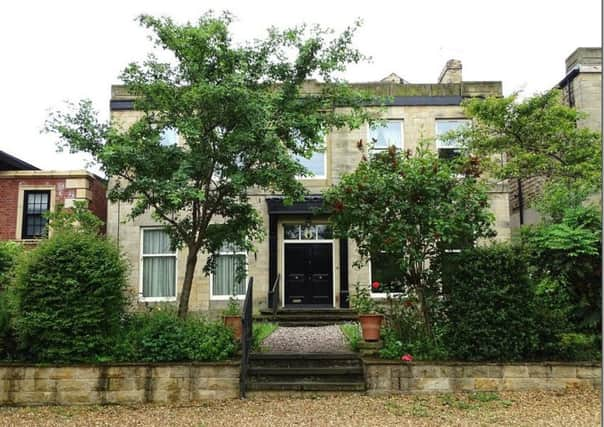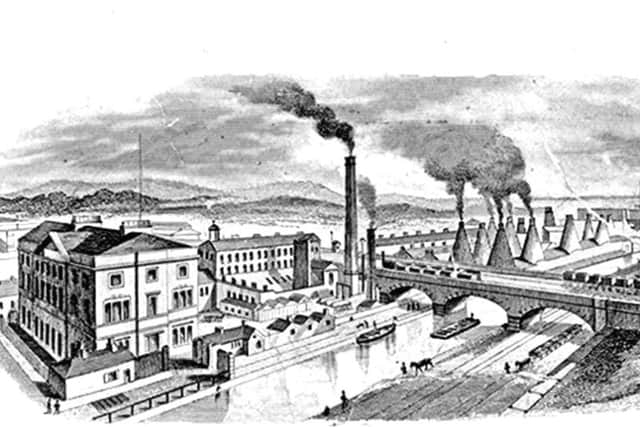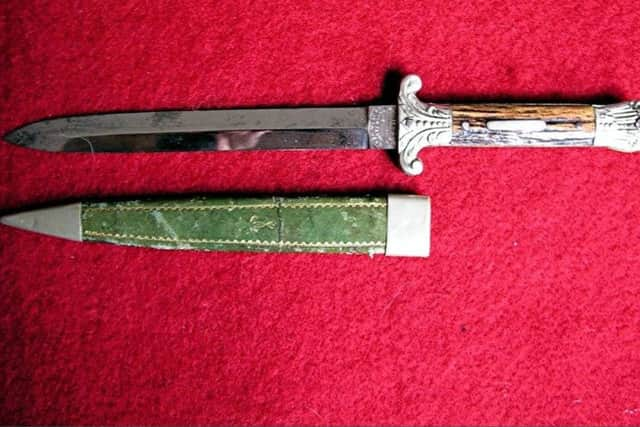Finest 19th century steel products made in Sheffield still fetch high price


This carved inscription is a later addition. And whoever carved it just didn’t leave enough room for the G in Grove. However, I’ll move on from this,
It was in 1862 that Benjamin James Eyre lived here with his family. Benjamin James Eyre, was the son of Ellis Eyre, who was a grocer and a tea dealer in Fargate.


Advertisement
Hide AdAdvertisement
Hide AdHe was born in about 1812 in Brough, Derbyshire, and he became a merchant partner in the Sheaf Works of William Greaves.
When the business was dissolved in 1850, Eyre, Ward & Co was formed,
Benjamin Eyre invited Frederick Ward to join him in the company, alongside two travellers named James Hale and William Brownell. The company made its mark at the Great Exhibition of 1851, where it won a Prize Medal for its table cutlery.
At this time the company was exporting to the US, Canada, South America and Australia. At the time its razors, pocket-knives, daggers and Bowie knives were “made from the best cast steel and were very varied in quality”.


Advertisement
Hide AdAdvertisement
Hide AdThere were also scissors, scythes, and sickles and, between the years 1850 and 1855, Eyre, Ward & Co built a purpose built factory on Cadman Street, just a few hundred yards from the Sheaf Works.
In 1852 Benjamin Eyre joined Asline Ward and set up a new York office which operated up to 1857 when Benjamin established his own agency and placed William Brownell, his American representative in place. Sadly Benjamin’s business partner James Hale was taken ill and lost his fight for life through heart and lung disease. He died at his home – 281 Glossop Road on January 25 1856.
In 1857, the Eyre, Ward partnership was dissolved. At this time Benjamin Eyre began trading alone at Sheaf Works as BJ Eyre & Co. By 1861, the Census recorded that Eyre employed 108 workers.
After 1863 the firm’s address was number 116 Rockingham Street, next door to his Sheffield office and residence, Benjamin Eyre also owned Brough House, in the Hope valley. At the time he was also chairman of the Milldam Mining Company.
Advertisement
Hide AdAdvertisement
Hide AdIn 1876, Benjamin Eyre sold his Sheffield firm and New York office to the New York merchant house of Frederick Wiebusch.
Benjamin Eyre died at his residence in Collegiate Crescent on September 5 1878, aged 66. In the my Cutlery bible by Geoff Tweedale, Benjamin’s address is given as Collegiate Crescent, which just doesn’t tally with the information in the directories of the time.
Benjamin Eyre died at his residence of number six Broomgrove Road on the 5th of September 1878, aged 66. His body was taken to Hope and was buried in the churchyard there close to his Derbyshire home in Brough.
In his will Benjamin Eyre left under £2,000, which was a paltry sum when you look at his houses.
Advertisement
Hide AdAdvertisement
Hide AdIn 1879 Frederick Wiebusch and Col James Frary come up with the crazy idea to transfer 130 of the Eyre workforce to the Frary Cutlery co in Bridgeport Connecticut. They took with them their tools plus some local water for hardening and for tempering purposes.
Col Frary described them as “intellectual samples of the open, hospitable, quick tempered British workman, fond of his drink, never thinking about tomorrow, having no ambition and was content to be kicked by his superiors and the to retaliate by kicking his inferiors if he could find any”.
The Eyre workforce were unimpressed by their American experience. Wages were lower than promised and most returned to Sheffield when they learned they had to train unskilled Europeans – it seems that nothing has changed there then.
Eyre, Ward & Company knives and razors are still keenly sought after throughout the world. One razor in a recent auction had a starting price of $500, which is not bad when you think that they sold originally for one shilling to two and six.
Advertisement
Hide AdAdvertisement
Hide AdI believe that Benjamin is one of the Eyre’s of Derbyshire – the last direct descendants of the famous Eyre Family of Derbyshire may well have left over a century ago, but the legacy of their 950 year tenure has bequeathed to the county a history rich in its heritage of architecture and legend. The original Eyre family came over from Normandy with William the Conqueror in 1066 and by the time of Edward the First were settled at Hope. Robert le Eyre was hereditary warden of the Royal Forest of the Peak, which was administered from Peveril Castle in Castleton, a post which was held almost a century later in the reign of Edward the Third by his grandson William le Eyre de Hope, who was also warden of the forests of Edale, Hassop and Derwent.
Throughout medieval times the Eyre’s of Hope branched out and a number of their descendants became lords of various manors in Derbyshire. Thus in Tudor England they held catholic enclaves at Hassop, Hope and at Dunston and Newbold near Chesterfield and also at Hathersage. Later Eyre’s endowed Hathersage with its church and held manorial lands in Kiveton and across the border in Nottinghamshire. Much of the parish church of St Michael & All Angels in Hathersage dates from 1381, and it was extensively rebuilt by Sir Robert Eyre following his return from the Battle of Agincourt where he and his father, Sir Nicholas Eyre, and a company of local men had distinguished themselves on the famous field on St Crispin’s Day in 1415. The porch was added in 1500 by Robert Eyre’s son and there are some excellent memorial brasses to the Eyre family inside the church; also a 15th century Sanctus bell inscribed with a prayer for Robert Eyre and his wife Joan. In Short I’m sure Benjamin was one of this old family.
The majority of this information is from Geoff Tweedale’s Directory of Sheffield Cutlery Manufacturers, a copy of which Geoff kindly gave me, without which this article couldn’t have been written.